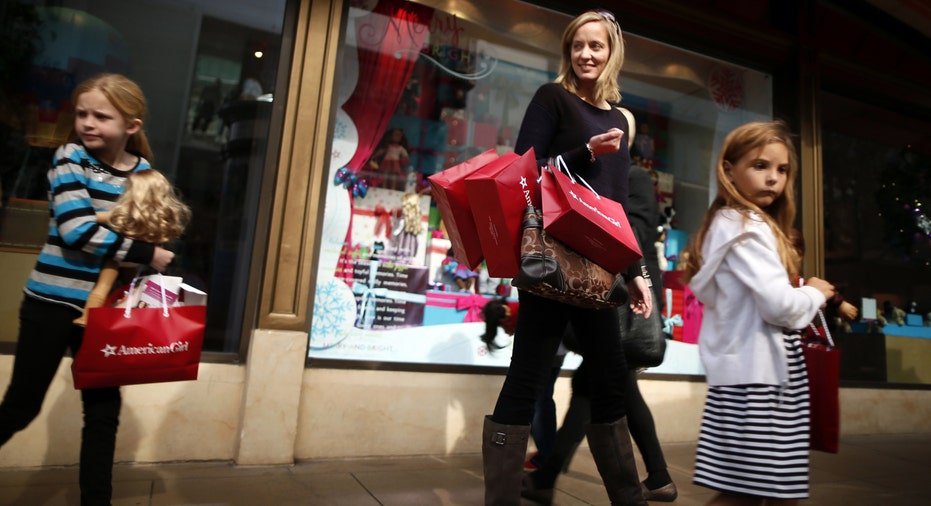What Gives: Shoppers Confident Enough to Spend, but Won't

U.S. retail sales rose less than expected in October amid a surprise decline in automobile purchases, suggesting a slowdown in consumer spending that could temper expectations of a strong pickup in fourth-quarter economic growth.
Other data on Friday showed a second straight monthly decline in producer prices as the cost of services fell. Weak inflation and signs of slowing consumer spending could complicate the Federal Reserve's decision next month whether to raise interest rates.
"Even though we continue to expect personal spending to remain a key source of support for economic activity this quarter, this report does point to a very weak start to the quarter," said Millan Mulraine, deputy chief economist at TD Securities in New York
The Commerce Department said retail sales edged up 0.1 percent last month after being unchanged in September. Economists had forecast sales increasing 0.3 percent.
Sales at auto dealerships fell 0.5 percent last month after rising 1.4 percent in September. The decline was surprising given that automakers reported strong sales for October. Economists said heavy discounting to attract buyers was likely to blame for the discrepancy.
Retail sales excluding automobiles, gasoline, building materials and food services rose 0.2 percent after a 0.1 percent gain in September. These so-called core retail sales correspond most closely with the consumer spending component of gross domestic product.
The lackluster report suggests that savings from cheaper gasoline are being used to pay rents, which have increased substantially over the past year. The weak October retail sales could raise concerns about the upcoming holiday shopping season.
Still, a strong labor market, which is expected to push up wages, is likely to support consumer spending in the fourth quarter. A separate report showed the University of Michigan's consumer sentiment index rose to 93.1 in early November from a reading of 90.0 in October.
The survey showed an improvement in buying plans for large discretionary purchases, especially vehicles. Lower income households also were upbeat about their prospects in November.
PRODUCER PRICES FALL
A third report from the Labor Department showed its producer price index fell 0.4 percent last month after dropping 0.5 percent in September.
In the 12 months through October, the PPI fell 1.6 percent, the largest decline since the revamped series started in 2009 and following on the heels of a 1.1 percent drop in September.
October also marked the ninth straight 12-month decrease in the index.
The soft spending and inflation data did not significantly shift expectations that the Fed will raise interest rates next month in the wake of October's robust employment report.
U.S. rates futures implied that traders saw a 66 percent chance of a rate hike in December, compared to 70 percent on Thursday, according to CME Group's FedWatch.
The U.S. central bank has kept its benchmark overnight interest rate near zero since December 2008.
Prices of U.S. Treasuries rose after the data, while U.S. stocks fell. The dollar was trading higher against a basket of currencies.
Economic growth slowed to a 1.5 percent annual pace in the third quarter as businesses worked through an inventory glut and energy companies continued to cut back spending in response to lower oil prices.
But a fourth report from the Commerce Department suggested the drag on third-quarter growth from inventories was probably not as large as initially thought. Retail inventories excluding autos, which go into the GDP calculation, increased 0.5 percent in September after a similar rise in August.
Last month, retail sales also were held back by a 0.9 percent drop in the value of sales at service stations, which reflected lower gasoline prices. Service station receipts fell 4.0 percent in September.
Clothing store sales were flat last month. Receipts at building materials and garden equipment stores rose 0.9 percent, while sales at furniture stores increased 0.4 percent.
Receipts at sporting goods and hobby stores gained 0.4 percent and sales at restaurants and bars rose 0.5 percent. Sales at electronics and appliance stores fell 0.4 percent. Sales at online stores increased 1.4 percent.
(Reporting by Lucia Mutikani; Editing by Paul Simao)